Insects damage plants when they feed. Some pests feed on only one type of plant. For example, the larvae or caterpillars of the citrus swallowtail butterfly feed only on citruses such as oranges, lemons and naartjie. Other pests feed on many different types of plants. For example, the larvae of the Mediterranean fruit fly feed on citrus, mangoes, coffee, litchis, guavas, peaches, grapes, granadillas and many other types of fruit. When you see small worms in the fruit, they are usually fruitfly larvae.
The damage that plant pests do to plants depends on the way that they feed. Insects feed in one of two ways - either they chew, or they suck.
The types of damage that chewing or sucking insects cause are given below. You can use this information when you see that damage has been done to some of your plants and you want to find out what is causing the damage.
Chewing Insects
Insects that chew damage plants in the following ways:
- Chew large holes in the leaves. For example, many different types of beetles, grasshoppers and caterpillars.
- Some types of insects lay their eggs in the fruit. The larvae which come out of the eggs then chew on the fruit. For example, fruit flies and codling moths.
- Chew along the surface or into the fruit. For example, bollworms and leaf roller caterpillars.
- Chew or bore into the wood of stems or roots. For example, termites and wood-borers.
- Chew through the stems of seedlings. For example, cutworms.
- Chew holes in seeds. For example, weevils.
- Chew the flowers so that a few fruit form. For example, CMR beetles.
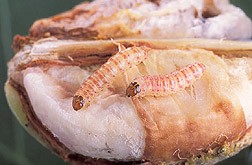
Bollworms
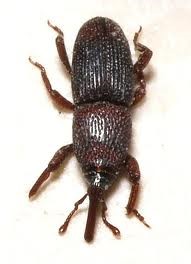
Weevil
Sucking Insects
Some insects suck the liquid out of leaves, buds, fruit, shoots, roots or branches. This liquid is called sap. Removing sap damages plants in the following ways:
Leaves curl. Caused by, for example, aphids.
Leaves or fruit are malformed or have strange shapes. This is often caused by sucking insects feeding on the leaf or flower buds. For example, mites or stinkbugs.
Leaves are mottled or covered in small yellow marks. Caused by, for example, thrips and red spider mites.
Shoots and branches die. Caused by, for example, scale insects.
Brown, soft areas on fruit. Caused by, for example, fruit-piercing moths.
Marks on the skins of fruit. Caused by, for example, scale insects, red spider mites and thrips.

Mites
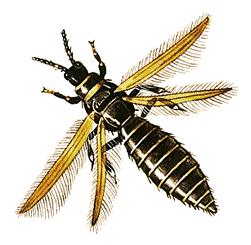
Thrip
Encourage The Natural Enemies Of Pests
Plant pests are all parts of their own food chains and food webs. There are many animals that eat pests animals that eat crop plants. These pest-eating animals, which we call predators or natural enemies, help t keep pest numbers down. Spraying with chemical pesticides kills the natural enemies as well as the pest insects. Examples of natural enemies of plant pests are lizards, chameleons, insect-eating birds including chickens and ducks, ladybird beetles and larvae, praying mantises, spiders, wasps and some fly larvae. Some wasps lay their eggs into the larvae of pest insects.
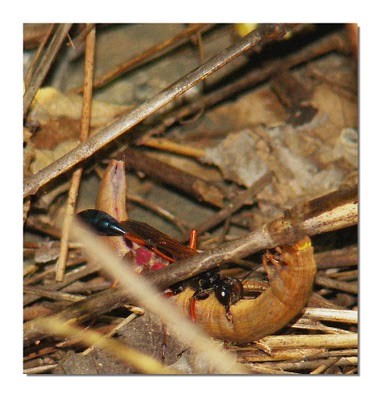
A wasp carrying a caterpillar to its nest
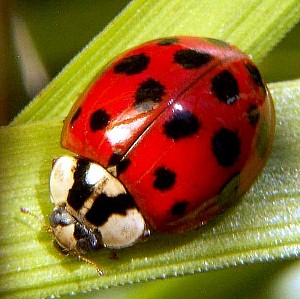
A ladybird beetle eating scale insect